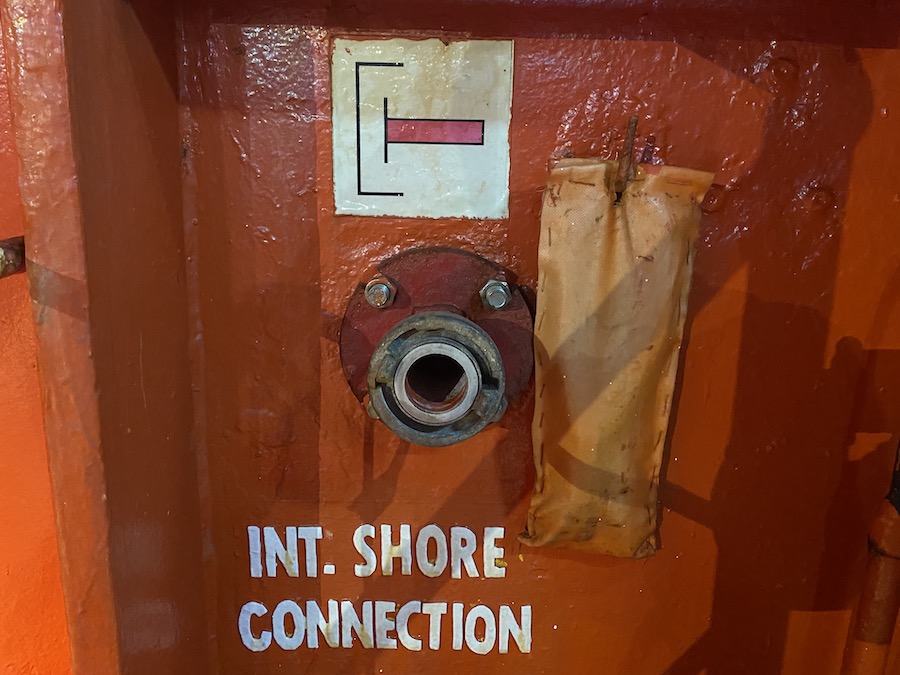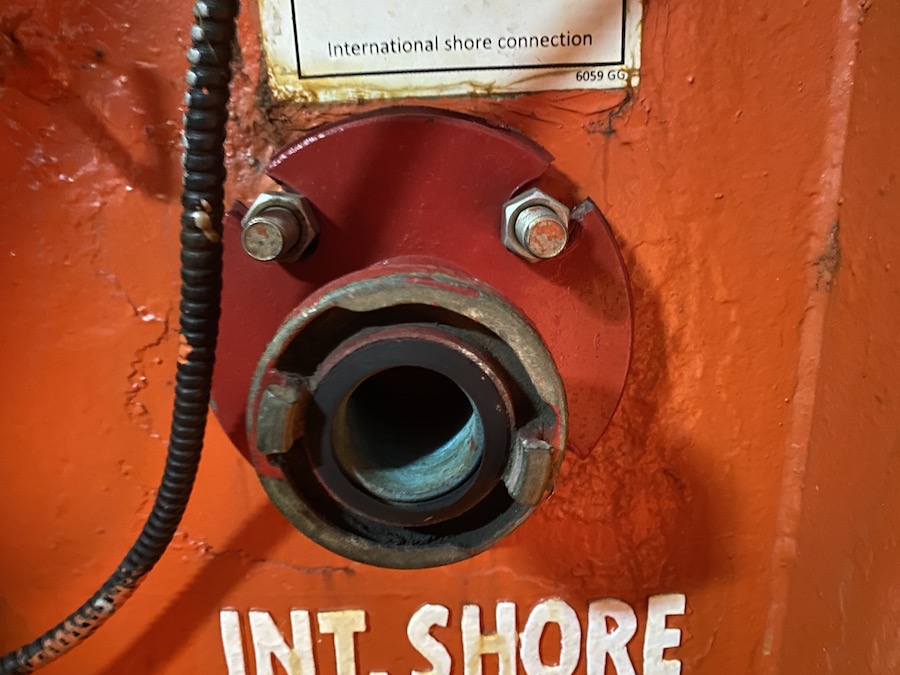The importance of the International Shore Connection (ISC) is critical for both routine and emergency situations, especially when a vessel is in a foreign or remote port.
The International Shore Connection is required by the International Maritime Organization (IMO) under SOLAS regulation (Safety of Life at Sea), specifically Chapter II-2, Regulation 10, 2.1.7. It mandates that ships over 500 gross tonnage must have an ISC onboard, complying with the Fire Safety Systems Code.
This universal hose size allows other ships and shore facilities to connect in case of a fire, ensuring firefighting capabilities even when the ship’s own pumps are insufficient.

At times, the ISC may often be neglected or even forgotten by the crew due to its location and infrequent use. However, maintaining and ensuring the shore connection, including its spanner, is in good working order is vital in the event of a fire onboard.
Particulars of International Shore Connection
The Fire Plan would indicate the location and number of International Shore Connection units onboard.
The main unit of the ISC features an outer diameter of 178 mm, an inner diameter of 64 mm, and a bolt circle diameter of 132 mm. The main unit has four hole slots in the flange, each with a 19 mm diameter. The flange thickness is at least 14.5 mm.

The ISC box also includes four bolts and four nuts, each bolt being 50 mm in length and 16 mm in diameter. At least eight washers are included in the ISC box.
The ISC box is typically located on both sides of the accommodation area, near the gangway for easy access and quick operation during a fire emergency.
Operation of International Shore Connection
The ISC can be operated in two ways:
- It can be connected directly to the ship’s fire hydrant.
- It can be connected to a fire hose, which is then connected to a shore facility’s fire hydrant or another vessel’s hydrant when the ship is in distress, either at anchor or adrift at sea.
Maintenance
Maintaining the ISC unit is crucial to ensure its functionality in emergencies. The 3rd officer is responsible for inspecting and maintaining the unit. Regular greasing and painting are required, and the coupling should be attached to the fire hydrant during scheduled fire drills. The flange is checked for brittleness or tears, and bolts, nuts, and washers must be rust-free.
SOLAS Regulation 10, 2.1.7 International Shore Connection
2.1.7.1 Ships of 500 gross tonnage and upwards shall be provided with at least one international shore connection complying with the Fire Safety Systems Code.
2.1.7.2 Facilities shall be available enabling such a connection to be used on either side of the ship.
- Types of Gas Carriers as per IGC Code – April 22, 2025
- Wind-Assisted Propulsion Systems (WAPS): A Game Changer for Maritime Decarbonization – February 6, 2025
- 10 Boat Salvage Yards in California – January 25, 2025



